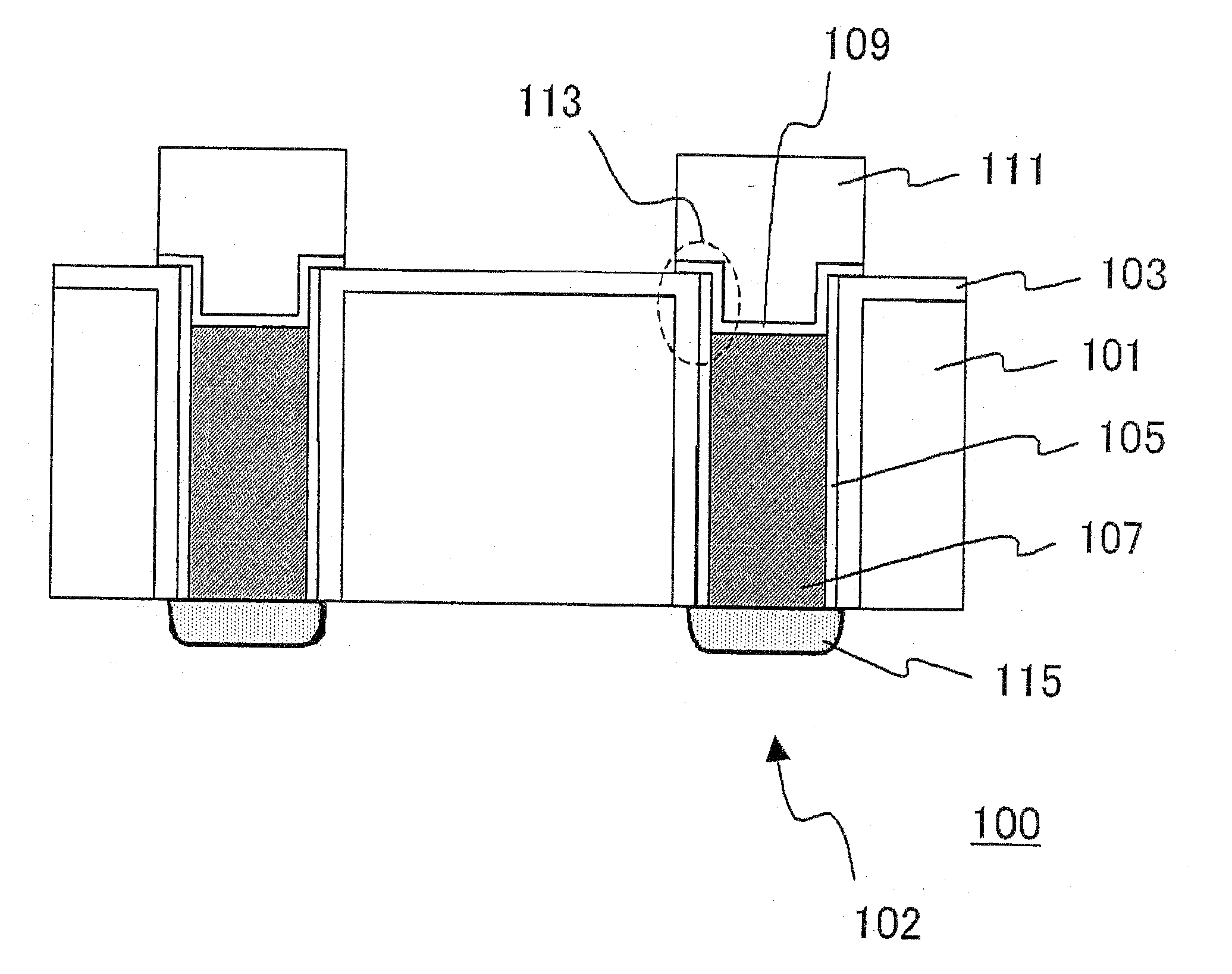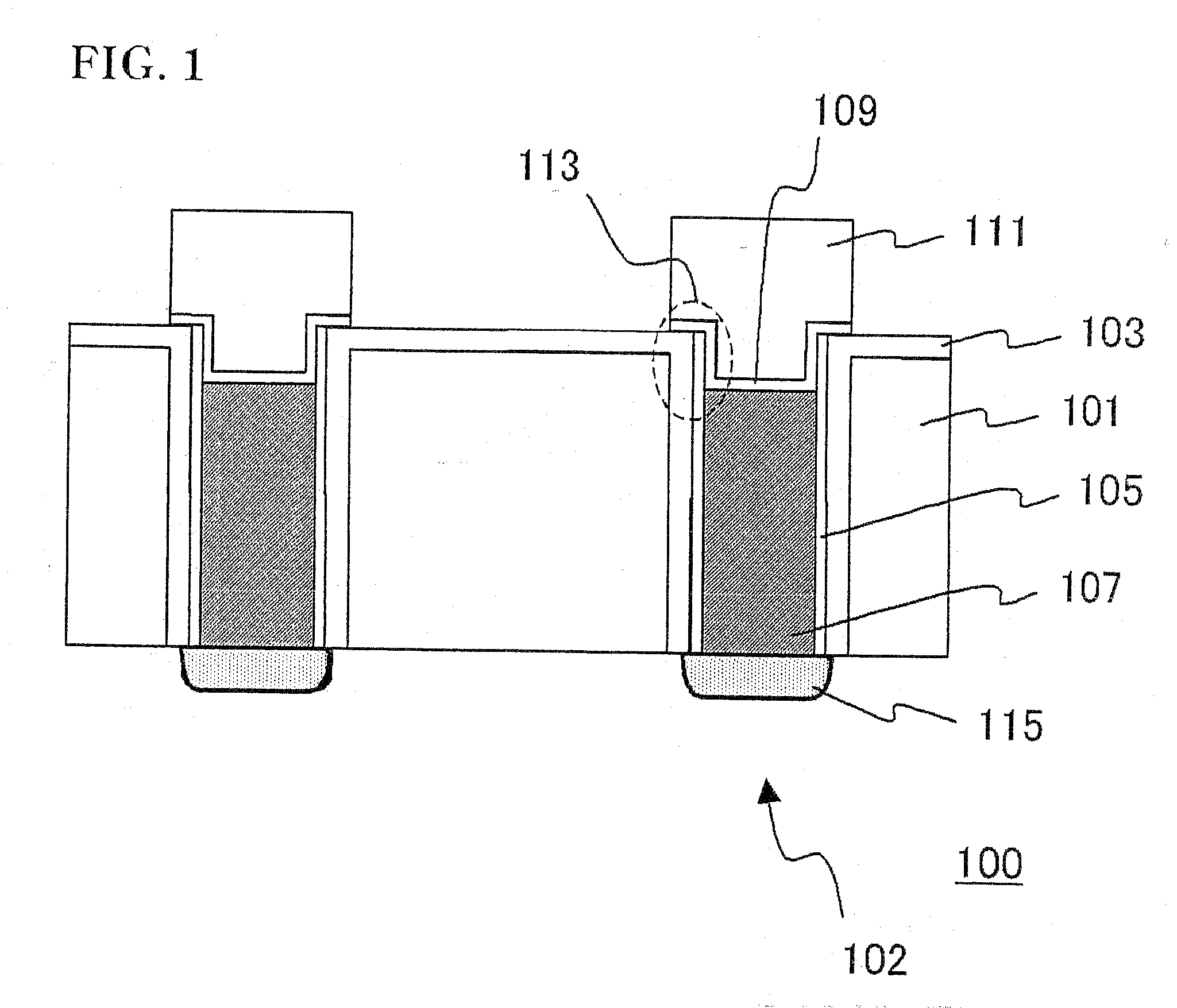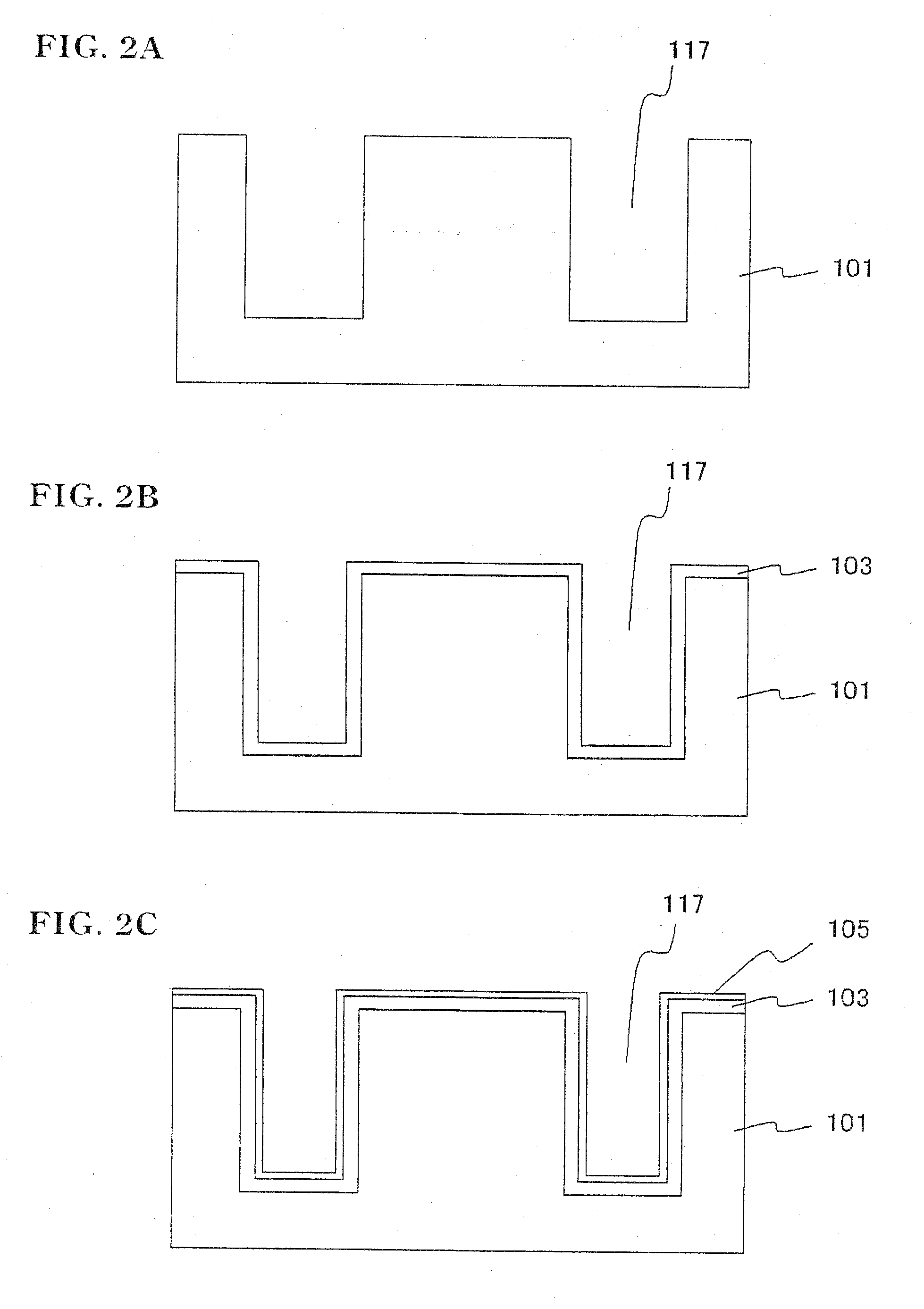Method of manufacturing a through electrode
a technology of through electrodes and electrodes, applied in the direction of semiconductor devices, semiconductor/solid-state device details, electrical apparatus, etc., can solve the problems of reducing the contact resistance between electrodes, and achieve the effect of excellent properties
- Summary
- Abstract
- Description
- Claims
- Application Information
AI Technical Summary
Benefits of technology
Problems solved by technology
Method used
Image
Examples
example
[0085] As the example, the silicon spacer 100 shown in FIG. 1 was manufactured according to the process described referring to FIGS. 2A to 2C, 3D to 3F, 4G to 4H and 5I. Here, a SiO2 film of 300 nm in thickness was formed as the insulative thick film 103. The SiN film 105 was formed to have a thickness of 50 nm. The through plug 107 was formed of a Cu film. Also, the silicon substrate 101 was thinned to 200 μm by grinding rear surface of the silicon substrate 101. The silicon spacer 100 including the through electrode 102 was obtained with highly stability of the manufacturing process and an excellent yield.
PUM
| Property | Measurement | Unit |
|---|---|---|
| thickness | aaaaa | aaaaa |
| thickness | aaaaa | aaaaa |
| thickness | aaaaa | aaaaa |
Abstract
Description
Claims
Application Information
 Login to View More
Login to View More - R&D
- Intellectual Property
- Life Sciences
- Materials
- Tech Scout
- Unparalleled Data Quality
- Higher Quality Content
- 60% Fewer Hallucinations
Browse by: Latest US Patents, China's latest patents, Technical Efficacy Thesaurus, Application Domain, Technology Topic, Popular Technical Reports.
© 2025 PatSnap. All rights reserved.Legal|Privacy policy|Modern Slavery Act Transparency Statement|Sitemap|About US| Contact US: help@patsnap.com



